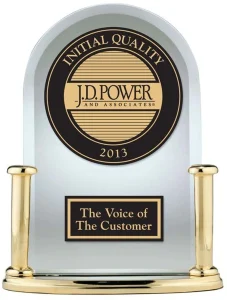Detroit & Cummins Engines Rank Highest In Customer Satisfaction
A 2012 U.S. Heavy-Duty Truck Engine and Transmission Study was released by J.D. Power and Associates on August 23 of this year. The results show that 46% of owners report engine related problems; 4% higher than it was last year. Detroit and Cummins came in at the top two spots for overall customer satisfaction as well as a Power Circle Rating by J.D. Power.com.
This study takes a few components into account in able to measure the satisfaction of primary maintainers with regards to engines and transmissions for Class 8 trucks. First off, these trucks in question have to be at least one model year old and are rated in the following categories;
 Engine reliability and dependability
Engine reliability and dependability- Engine warranty
- Acceleration when fully loaded
- Electronic control module
- Accessibility to components for service or maintenance
- Vibration at idle
- Maintaining speeds on grades
- Average fuel economy.
Technology that has been put in place to comply with the new emission regulations, have resulted in more engine problems. The most common problems are related to the electronic control module calibration, exhaust gas recirculation valve, and electronic engine sensors. In addition, the average number of engine and fuel related problems have increased 10% in the past year. This increase has led to a decrease in satisfaction dropping 20 points.
The increase in engine problems does more than frustrate the maintainers that were polled for this study. The more malfunctions a truck has, the more downtime it will experience, costing the owner money for time the rig is not on the road. Brent Gruber is the director of the commercial vehicle practice at J.D. Power and Associates, and commented on the financial downfall as well as the possible advantages. “The new engines are proving to be more fuel efficient and allowing greater up-time between service, so despite initial quality issues, the new technology may offer a greater return on investment in the long run.”
